Smart home technology is an increasingly popular way for tenants and condominium owners to manage their lighting, sound, security, and climate of their residences from their smartphones or other devices.
A common misperception held by some multifamily developers and operators is that smart home technology appeals only to residents of upscale properties in the urban core, according to Donald Davidoff, an apartment industry consultant with D2 Demand Solutions.
“The appeal is obvious to those developing properties for the less price-sensitive and traditionally tech-hungry demographics,” he said. But he argues that the efficiencies the technology brings can have a much broader appeal—to residents of workforce housing, for example.
Many multifamily developers and operators believe that residents of workforce housing cannot afford the rent increases associated with offering a technology package. “But saving $25 in energy costs on a $900 rental may have more financial impact for residents of workforce housing than saving $50 on a $2,200 rent would have for urban professionals,” said Davidoff.
SMART TECHNOLOGY—IT’S NOT JUST FOR THE YOUNG
Another common misconception among multifamily developers and operators is that smart technology appeals only to affluent millennials and Gen-Zers, said Davidoff. He cited a Pew Research report showing that grandparents are adopting mobile-driven experiences more quickly than they did with previous technologies.
With Americans still facing Covid-related restrictions on their movement, smart systems in multifamily housing offer yet another advantage to property owners: the ability to permit short-term controlled access to potential renters or condominium buyers for self-guided tours.
Thanks to keyless entry, the property manager or sales agent can grant access to a prospect without having to be accompanied. For the foreseeable future, the ability to offer a self-show option could be a sales and marketing differentiator for multifamily communities.
Let’s take a look at nine smart multifamily connectivity systems.
BOINGO – ‘ENGINEERED FOR THE 5G ERA’
Boingo serves more than 300,000 residents nationwide. Its high-speed internet service, engineered for the 5G era, supports a wide range of smart home applications: building and unit access control, energy savings, smart lighting, leak detection, and water submetering. Boingo offers flexible and customizable Wi-Fi and IoT models to support each community’s unique smart home agenda.
Boingo manages the property’s Wi-Fi connectivity end to end. This takes the guesswork out of powering the many connected devices that can populate a multifamily complex, such as smart thermostats, connected door locks, and gaming devices, whether they’re located in residential units, the pool, the fitness center, or the dog park. Boingo designs, builds, and operates networks 24/7/365 and provides individual customer support, property support, and network monitoring.
Boingo puts property owners and managers in control of their Wi-Fi and smart home offerings, while also giving them access to real-time usage insights and analytics. For residents, Boingo provides secure, instant-on, communitywide Wi-Fi coverage immediately on move-in.
BRILLIANT – ‘PREMIUM VALUE, AFFORDABLE PRICE’
Brilliant Smart Home System helps developers and property managers offer a premium built-in smart apartment experience at an affordable price. Brilliant control panels make it easy for residents to control lighting, thermostats, cameras, locks, music, shades, and visitor access via the touchscreen or built-in voice control.
Brilliant control panels also have motion sensors to automatically turn lights on and off when tenants enter or leave a room. A built-in camera with privacy shutter allows occupiers to check in on the apartment or communicate with people at home while they’re outside the home. Brilliant’s smart dimmer switches enable smart lighting throughout a residential unit.
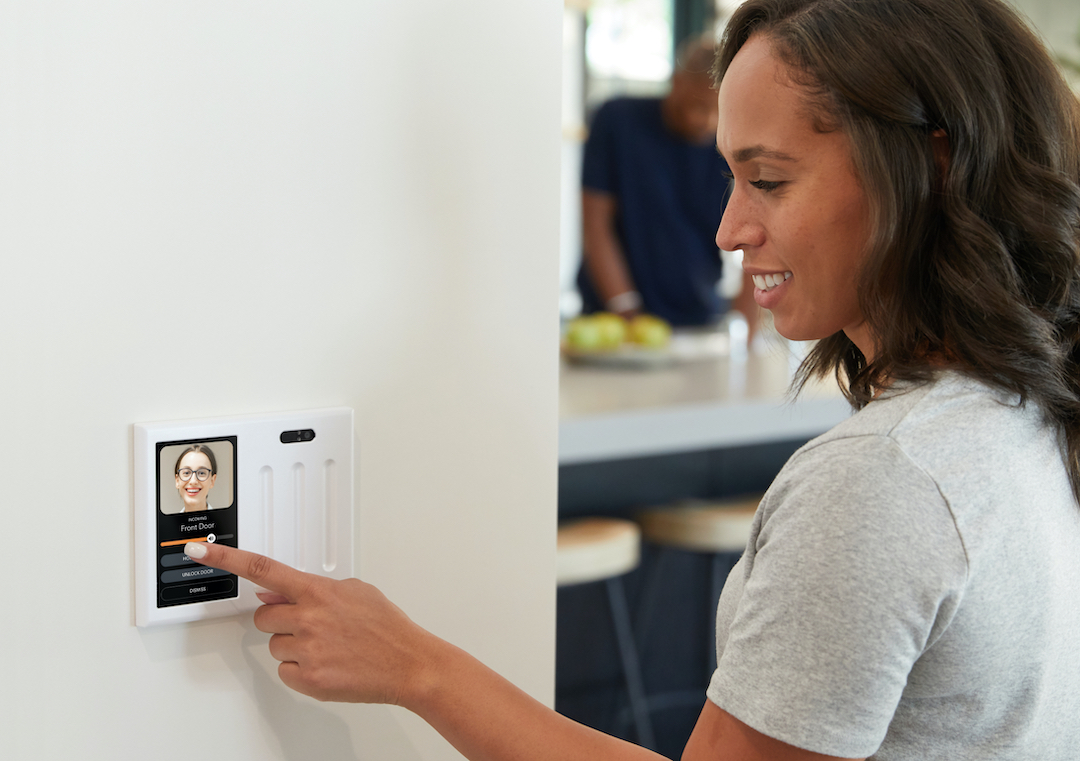
Photo: Brilliant Smart Home System
Brilliant works with Amazon Alexa, Google Assistant, Apple HomeKit and Siri, Honeywell Home, Ring, Sonos, ButterflyMX, Salto, Schlage, and Entrata.
Brilliant Command Center software helps property managers reduce energy and operational costs and streamline security via its robust access control system.
CARSON LIVING – THE ‘24/7 REMOTE DOORMAN’
Carson Living bills itself as “the one-app resident experience and 24/7 remote doorman service.” It has been used in residential high-rises in New York City in place of a live doorman.
Carson Living has partnered with other technology companies to enhance its app. Among its partners are:
- 2N, which provides a 2N IP Verso audiovisual touchscreen video intercom for the front door
- Brivo, which integrates the electronic door lock systems and access control technology for doors and elevators
- Eagle Eye Networks, which supplies the cloud video management system for the multifamily community’s surveillance cameras
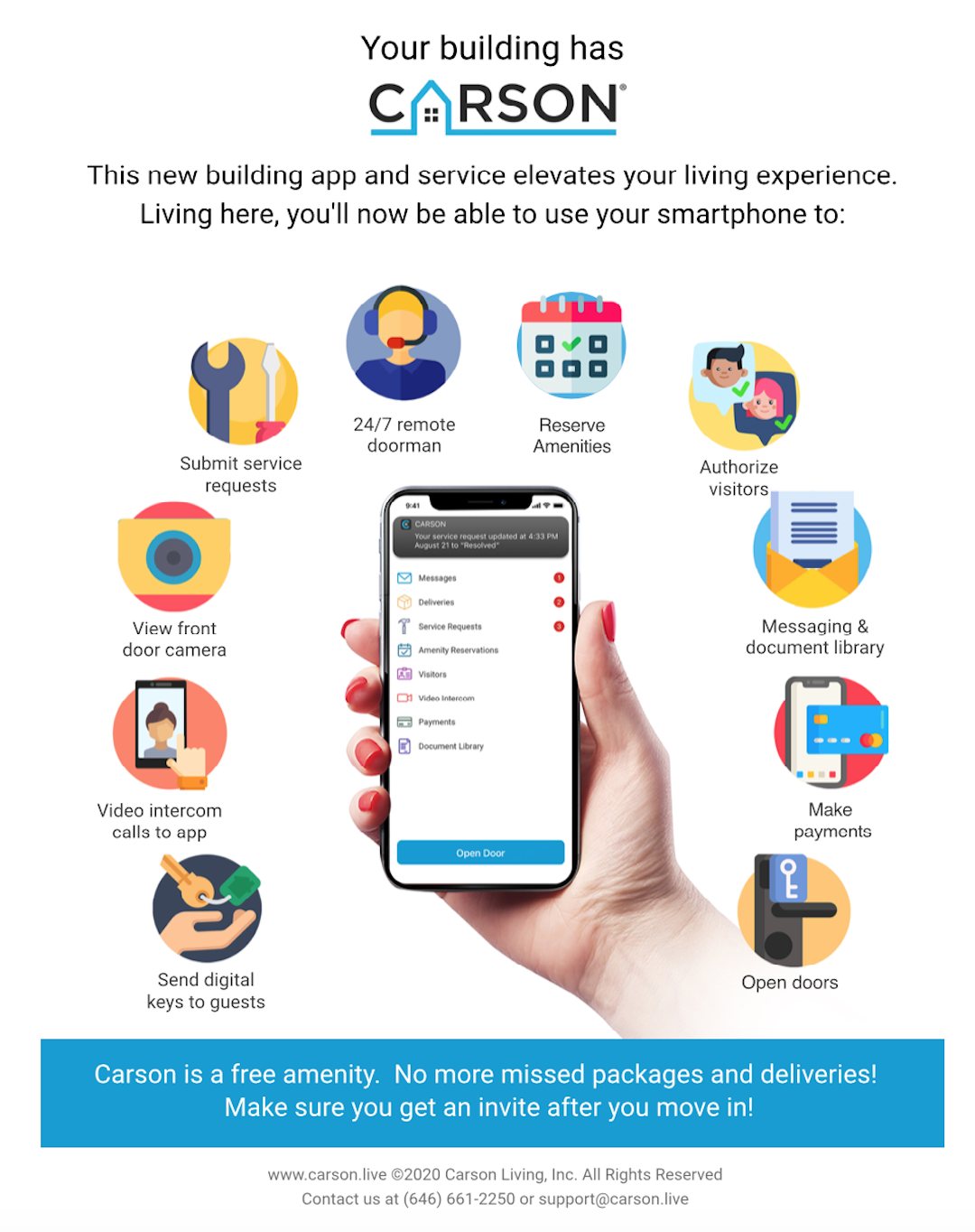
Image: Carson Living
Residents log into a single app on their smartphones to screen visitors at the door, submit a service request to the owner, direct the elevator to pick them up, pay their rent, unlock the bicycle storage, receive package notifications from the 24-hour remote doorman, and unlock the package room to pick up a delivery.
COMMUNITYCONNECT – ‘SMART WI-FI, MADE FOR DENSITY’
CommunityConnect by RealPage is enables intelligent buildings, smart access, and purpose-built smart Wi-Fi designed for density. Its Sustainability Suite provides water, energy, and waste management throughout a multifamily setting.
RealPage recently acquired WhiteSky Communications to provide managed communications services, enabling multifamily and student housing communities to provide managed bulk Internet, video, voice-over-internet protocol (VOIP) phone, and Wi-Fi services as CommunityConnect Smart Wi-Fi. Residents at CommunityConnect Smart Wi-Fi properties typically pay less for high-speed, secure, communitywide Internet that can be set up in minutes.
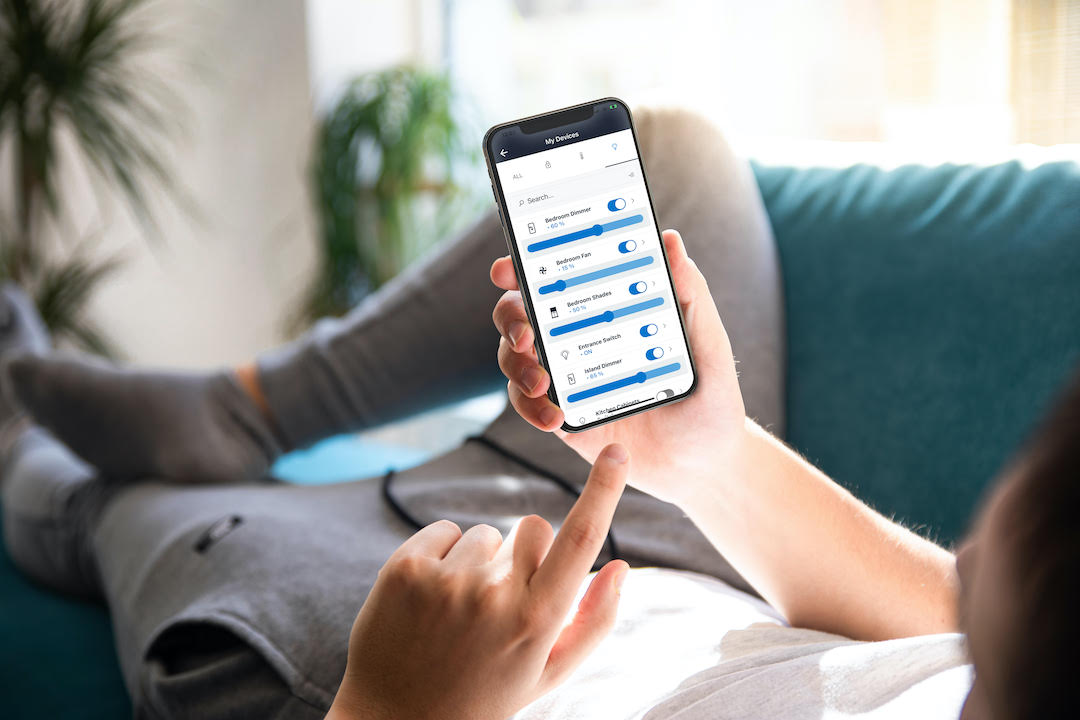
Photo: CommunityConnect by Real Page
RealPage CommunityConnect was initially developed by STRATIS IoT and enhanced with the acquisition of Chirp, for single-source, mobile-credentialed “Sidewalk to Sofa Smart Access” for building entry, amenities, elevators, garages, and storage. The system allows access control access for staff, maintenance, visitors, guests, and residents, and can enable self-tours and short-term rentals.
The CommunityConnect Smart Apartments system provides water, energy, and waste management via CommunityConnect Sustain. For property managers, CommunityConnect enables both Google Nest and Amazon Alexa Fleet Management.
DWELO – ‘PURPOSE-BUILT GATEWAY, CERTIFIED BY Z-WAVE’
Dwelo integrates its Smart Device Management platform with Nest, Kwikset, GE, and other property management systems. Dwelo is neither a smart device manufacturer nor a property management software provider; it is a purpose-built gateway that is certified by Z-Wave (an Internet of Things protocol), has Wi-Fi and Bluetooth capabilities, and can be integrated with Yardi, Google, RealPage, and Amazon. According to the company, Dwelo is being used by more than 80 multifamily ownership groups in the country to reduce operating costs and increase operating income in their multifamily properties.

Photo: Dwelo
LATCH – A ‘VERTICALLY INTEGRATED SOLUTION’
Latch uses a vertically integrated hardware/software solution for door access in apartment buildings to allow managers and renters to manage who has access—visitors, maintenance staff, deliveries, etc.
Its recently launched LatchOS enables occupiers to integrate the app with other devices, such as Sonos speakers, Honeywell and ecobee thermostats, and Jaso and Leviton light switches, all from their Latch app.
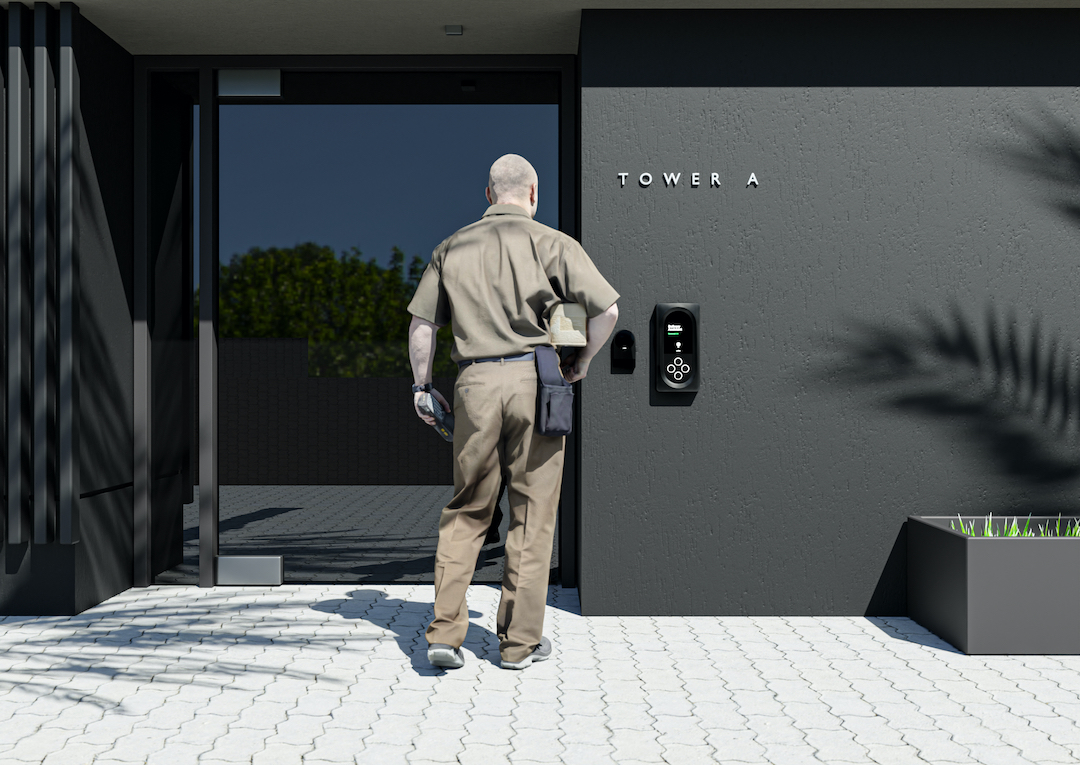
Photo: Latch
Latch sells the hardware to building owners and then charges the owner a monthly software fee, making the service free to renters or condo owners. With LatchOS, the company can build out integrations to earn revenue from residents who choose to upgrade to new features or purchase services through the platform.
POINTCENTRAL – AN ‘ALL-IN-ONE PLATFORM’
PointCentral, a subsidiary of Alarm.com, provides property automation that delivers an all-in-one platform for multifamily communities to streamline operational efficiencies, improve building health and wellness awareness, and deliver a cutting-edge amenity for residents.
The solution helps owners and operators streamline access control, guest entry, and in-unit smart home functionality on a single device, all while integrating with existing property management software.
PointCentral’s Connected Retro, coupled with a new integration with ButterflyMX, gives property managers more choice in smart intercom solutions controlled through the PointCentral mobile app. Connected Retro can upgrade an existing telephone-based intercom system into a connected intercom without adding or replacing hardware.
Residents can create scheduled smart keys for guests and delivery personnel and delete the keys at any time directly from the PointCentral app.
Because PointCentral is based on cellular technology, it can be readily transitioned to an automation solution for retrofit properties.
SMARTRENT – ‘REMOTE MANAGEMENT VIA SMART DEVICES’
SmartRent equips smart apartments and condominiums with a hub, lock, thermostat, and leak sensors. The system can also control smart lighting and plugs, shades, garage door controllers, doorbells, video intercoms, and sensors that detect motion and unintentional openings.
The app provides residents with remote management of their devices and apartment settings. When the tenant moves out, site staff can transfer the unit from occupied to vacant, triggering a succession of automated actions through Smart Rent’s software: removing access codes from locks, creating work orders for turn requests, adjusting the temperature, and switching off lights.
SmartRent also offers voice-enabled features and the ability to connect a personal voice-assistant device.
XFINITY COMMUNITIES – ‘INTERNET + ENTERTAINMENT’
Xfinity Communities provides Internet and entertainment services to residents of multifamily properties. Residents can manage their individual living units on their phones via Xfinity’s Smart Communities platform. Tenants can control their lights and climate control without having to use physical switches, thermostats, or touchpads. Smart locks reduce the risk of occupiers losing access to their units and may obviate re-keying costs for the property manager.
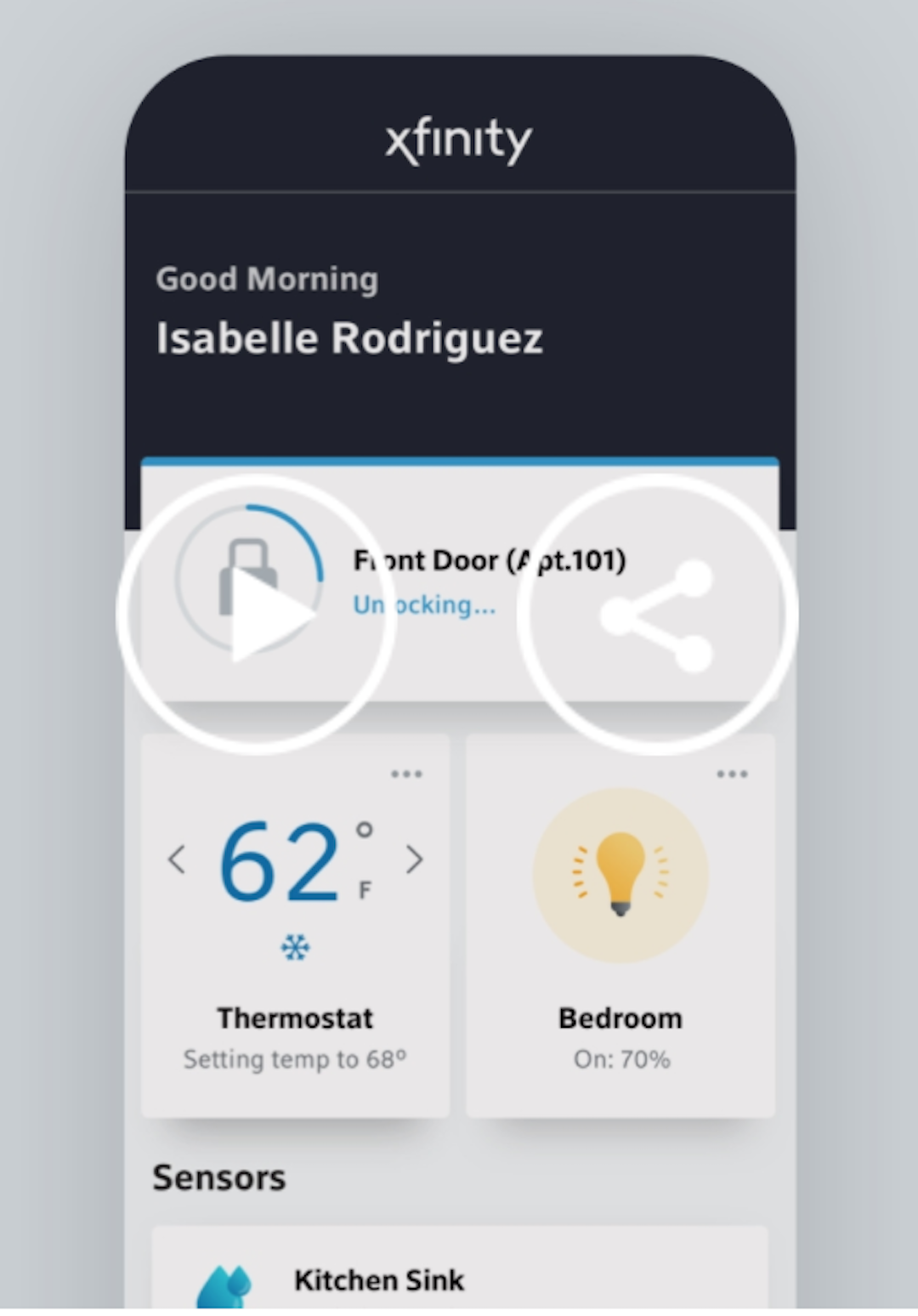
Photo: Xfinity Communities
The centralized platform can manage vacant units and common areas and monitor energy consumption in individual residences. Xfinity Communities’ smart device for water-leak detectors can help avoid catastrophic damage from flooding incidents. Maintenance and support of the technology lies primarily with property management, using the Xfinity Communities’ Smart Community Portal.
Related Stories
| Mar 17, 2011
Perkins Eastman launches The Green House prototype design package
Design and architecture firm Perkins Eastman is pleased to join The Green House project and NCB Capital Impact in announcing the launch of The Green House Prototype Design Package. The Prototype will help providers develop small home senior living communities with greater efficiency and cost savings—all to the standards of care developed by The Green House project.
| Mar 11, 2011
Renovation energizes retirement community in Massachusetts
The 12-year-old Edgewood Retirement Community in Andover, Mass., underwent a major 40,000-sf expansion and renovation that added 60 patient care beds in the long-term care unit, a new 17,000-sf, 40-bed cognitive impairment unit, and an 80-seat informal dining bistro.
| Mar 11, 2011
Mixed-income retirement community in Maryland based on holistic care
The Green House Residences at Stadium Place in Waverly, Md., is a five-story, 40,600-sf, mixed-income retirement community based on a holistic continuum of care concept developed by Dr. Bill Thomas. Each of the four residential floors houses a self-contained home for 12 residents that includes 12 bedrooms/baths organized around a common living/social area called the “hearth,” which includes a kitchen, living room with fireplace, and dining area.
| Mar 11, 2011
Texas A&M mixed-use community will focus on green living
HOK, Realty Appreciation, and Texas A&M University are working on the Urban Living Laboratory, a 1.2-million-sf mixed-use project owned by the university. The five-phase, live-work-play project will include offices, retail, multifamily apartments, and two hotels.
| Mar 1, 2011
How to make rentals more attractive as the American dream evolves, adapts
Roger K. Lewis, architect and professor emeritus of architecture at the University of Maryland, writes in the Washington Post about the rising market demand for rental housing and how Building Teams can make these properties a desirable choice for consumer, not just an economically prudent and necessary one.
| Feb 15, 2011
New Orleans' rebuilt public housing architecture gets mixed reviews
The architecture of New Orleans’ new public housing is awash with optimism about how urban-design will improve residents' lives—but the changes are based on the idealism of an earlier era that’s being erased and revised.
| Feb 11, 2011
Chicago high-rise mixes condos with classrooms for Art Institute students
The Legacy at Millennium Park is a 72-story, mixed-use complex that rises high above Chicago’s Michigan Avenue. The glass tower, designed by Solomon Cordwell Buenz, is mostly residential, but also includes 41,000 sf of classroom space for the School of the Art Institute of Chicago and another 7,400 sf of retail space. The building’s 355 one-, two-, three-, and four-bedroom condominiums range from 875 sf to 9,300 sf, and there are seven levels of parking. Sky patios on the 15th, 42nd, and 60th floors give owners outdoor access and views of Lake Michigan.
| Feb 11, 2011
Sustainable community center to serve Angelinos in need
Harbor Interfaith Services, a nonprofit serving the homeless and working poor in the Harbor Area and South Bay communities of Los Angeles, engaged Withee Malcolm Architects to design a new 15,000-sf family resource center. The architects, who are working pro bono for the initial phase, created a family-centered design that consolidates all programs into a single building. The new three-story space will house a resource center, food pantry, nursery and pre-school, and administrative offices, plus indoor and outdoor play spaces and underground parking. The building’s scale and setbacks will help it blend with its residential neighbors, while its low-flow fixtures, low-VOC and recycled materials, and energy-efficient mechanical equipment and appliances will help it earn LEED certification.
| Feb 11, 2011
Apartment complex caters to University of Minnesota students
Twin Cities firm Elness Swenson Graham Architects designed the new Stadium Village Flats, in the University of Minnesota’s East Bank Campus, with students in mind. The $30 million, six-story residential/retail complex will include 120 furnished apartments with fitness rooms and lounges on each floor. More than 5,000 sf of first-floor retail space and two levels of below-ground parking will complete the complex. Opus AE Group Inc., based in Minneapolis, will provide structural engineering services.
| Jan 27, 2011
Perkins Eastman's report on senior housing signals a changing market
Top international design and architecture firm Perkins Eastman is pleased to announce that the Perkins Eastman Research Collaborative recently completed the “Design for Aging Review 10 Insights and Innovations: The State of Senior Housing” study for the American Institute of Architects (AIA). The results of the comprehensive study reflect the changing demands and emerging concepts that are re-shaping today’s senior living industry.














